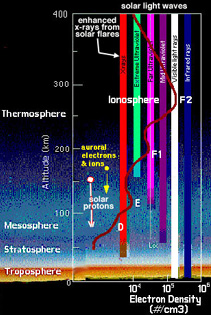This image shows how different types of solar radiation (x-rays to infrared radiation) penetrate into the Earth's atmosphere. It is this solar radiation that ionizes the upper atmosphere, creating the ionosphere.
Click on image for full size
Windows to the Universe original image
The Sun's Effect on the Ionosphere
Invisible layers of ions and electrons are suspended in the
Earth's atmosphere above about 60 kilometers in altitude. The main source of these layers is the Sun's ultraviolet light which ionizes atoms and molecules in the Earth's upper atmosphere. During this process, called photoionization, an electron is knocked free from a neutral atmospheric particle, which then becomes an ion. Because the Sun's light is responsible for most of the ionization, the ionosphere reaches maximum densities just after local noon. In this region, at altitudes where the highest densities occur, about one in every 1000 air particles is ionized. Resulting ionospheric densities are about a million ions and electrons per cubic centimeter.
Flares and other energetic events on the Sun produce increased ultraviolet, x-ray and gamma-ray photons that arrive at the Earth just 8 minutes later and dramatically increase the density of the ionosphere on the dayside. These solar events also can produce high velocity protons and electrons (arriving at Earth hours to days later) that precipitate into the ionosphere in the polar regions producing large increases in the density of the ionosphere at low altitudes.
You might also be interested in:

The thermosphere is a layer of Earth's atmosphere. The thermosphere is directly above the mesosphere and below the exosphere. It extends from about 90 km (56 miles) to between 500 and 1,000 km (311 to
...more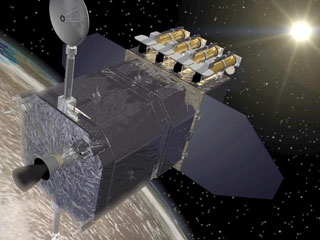
NASA's Solar Dynamics Observatory (SDO) is a satellite which carries several telescopes and other instruments for observing the Sun. The instruments on SDO produce much more detailed images than similar
...more
Rainbows appear in the sky when there is bright sunlight and rain. Sunlight is known as visible or white light and is actually a mixture of colors. Rainbows result from the refraction and reflection of
...more
The Earth travels around the sun one full time per year. During this year, the seasons change depending on the amount of sunlight reaching the surface and the Earth's tilt as it revolves around the sun.
...more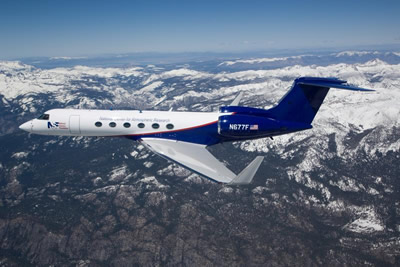
Scientists sometimes travel in specially outfitted airplanes in order to gather data about atmospheric conditions. These research aircraft have special inlet ports that bring air from the outside into
...more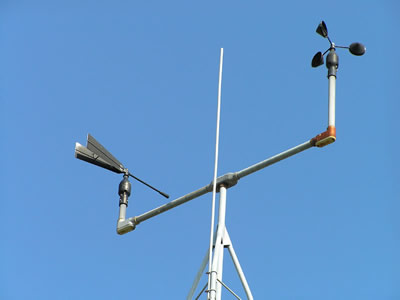
An anemometer is a weather instrument used to measure the wind (it can also be called a wind gauge). Anemometers can measure wind speed, wind direction, and other information like the largest gust of wind
...more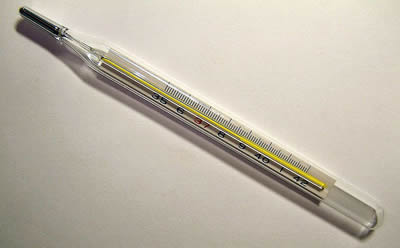
Thermometers measure temperature. "Thermo" means heat and "meter" means to measure. You can use a thermometer to measure the temperature of many things, including the temperature of
...more


